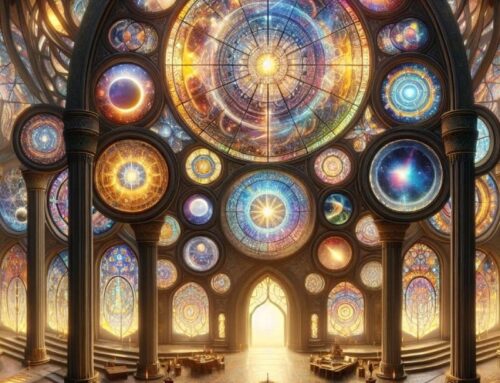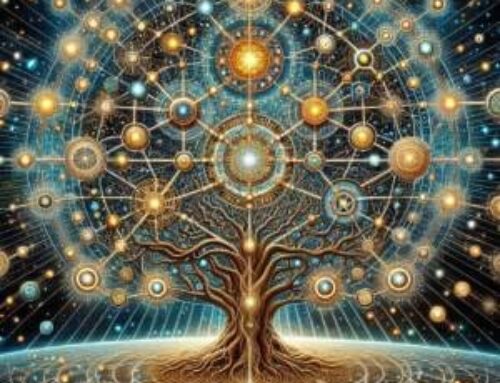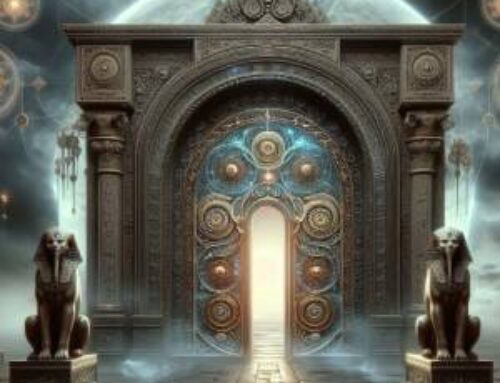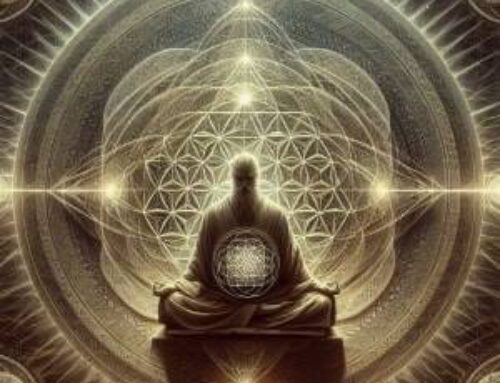Contents
- 1 Introduction to “Baphomet Gnostic Symbolism”
- 2 A Dance of Duality: Baphomet Gnostic’s Contradictory Nature
- 3 Baphomet Gnostic and the Third Eye: Gateway to Inner Vision
- 4 Baphomet Gnostic: A Gnostic Christian Perspective
- 5 A Multifaceted Symbol: Baphomet Gnostic – Conclusion and Reflection
- 6 FAQ- Baphomet Gnostic
- 6.1 1. What does Baphomet represent in Gnostic traditions?
- 6.2 2. How is Baphomet connected to the third eye in Gnostic symbolism?
- 6.3 3. What Does Baphomet Gnostic Represent in Gnostic Traditions?
- 6.4 4. How do Baphomet Gnostic teachings view mainstream religions?
- 6.5 5. Where can one learn more about Gnostic and Rosicrucian teachings?
- 7 References:
Introduction to “Baphomet Gnostic Symbolism”
Let’s dive into “Baphomet Gnostic Symbolism”: In the shadowy labyrinth of esoteric lore, the figure of Baphomet stands as an enigmatic sentinel. A symbol intertwined with mystery and controversy, Baphomet’s significance in Gnostic and occult traditions transcends the simplistic demonization often attributed to it. In these traditions, Baphomet serves as a potent emblem of profound spiritual truths, reflecting the intricate dualities of human nature.
By delving into Baphomet’s various representations within Gnostic symbolism, one can unearth deep insights into enlightenment, inner knowledge, and the reconciliation of opposing forces. Such an exploration resonates deeply within the Rosicrucian teachings, which emphasize the awakening of the Christ consciousness and the profound mysteries of the psyche. Rosicrucian texts, rich in allegory, cast Baphomet as a symbol of transformative power and spiritual equilibrium.
The Role of Evil: Evil is considered a necessary aspect of creation, providing a counterbalance that allows for free will and growth (1).
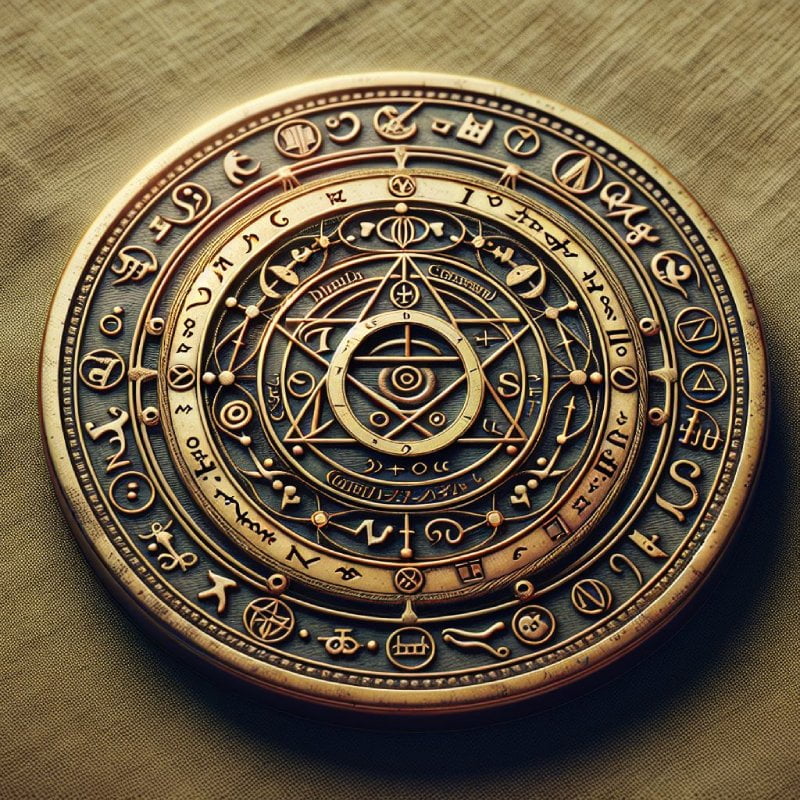
A Dance of Duality: Baphomet Gnostic’s Contradictory Nature
Ah, Baphomet! A figure of contradictions, a chimera blending human and beast. The duality embedded in Baphomet’s visage – part human, part animal – epitomizes the confluence of nature and spirit. This duality is a linchpin in Gnostic doctrine, underscoring the necessity of reconciling opposites to attain spiritual enlightenment. Rosicrucian tradition, too, mirrors this theme, presenting Baphomet as a representation of the physical meshed with the metaphysical.
Consider the dualities: light and dark, male and female, good and evil. These are not mere philosophical musings but a pathway to higher consciousness. The Rosicrucians preach that true spiritual growth demands embracing this balance, recognizing that enlightenment emerges from the synthesis of all facets of the self.
Now, for the practitioner, the duality symbolized by Baphomet isn’t just a theoretical construct; it’s a tangible journey. By integrating the disparate elements of one’s being, transcending the mundane perceptions, one steps onto the path of divine knowledge and understanding. Rosicrucian teachings, echoing through time, herald Baphomet as a guide towards this wholeness.
Baphomet Gnostic and the Third Eye: Gateway to Inner Vision
An inner awakening – the third eye – often finds its icon in Baphomet. This third eye, a theme recurrent in Gnostic and Rosicrucian wisdom, symbolizes the ability to perceive beyond ordinary vision. The Rosicrucians term it the “sixth Kandelaber,” a pivotal element in experiencing the Christ within. This concept of inner light is essential for unraveling the illusions of the material world, granting access to higher truths.
E’en with these words His aspect changed, and straightway, in the twinkling of an eye, all things were opened to me, and I see a Vision limitless, all things turned into Light − sweet, joyous [Light] (2).
In Rosicrucian discourse, the third eye facilitates connections with other life force centers, surpassing physical barriers to tap into universal truths. Baphomet, as an emblem of this awakening, epitomizes the potential for profound spiritual metamorphosis.
Within this awakening, the third eye serves as a tool for transcending the mundane. It allows Gnostics to connect with universal life forces, facilitating a deeper understanding of existence’s interconnectedness. The Rosicrucian texts emphasize the development of inner sight as vital for spiritual communion and enlightenment.
Baphomet Gnostic: A Gnostic Christian Perspective
In the rich tapestry of Gnostic Christianity, Baphomet is far from a heretical figure. Instead, it embodies the inner Christ, a beacon of hidden wisdom and spiritual illumination. True Gnosis, according to Rosicrucian texts, demands a personal, direct understanding of Christ that surpasses dogmatic confines. Here, Baphomet is a symbol of the intimate, inner connection with the divine.
Baphomet’s imagery, laden with complex symbolism, reflects the alchemical transformation inherent in Gnostic wisdom. This process of spiritual alchemy, transforming base aspects of the self into higher states of being, is vividly illustrated in Rosicrucian teachings. Baphomet thus stands as a guide through the stages of spiritual transmutation.
The true alchemist does not turn lead into gold; he turns the world into words.” (Book IX: On Thought and Sense) – A metaphorical interpretation of alchemy, emphasizing the transformation of perception (3).
The Gnostic critique of exoteric religion, viewing it as a vessel of ignorance and fear, finds its counter-symbol in Baphomet. This figure symbolizes liberation from the constraints of mainstream religious practice, advocating for a personal and direct divine experience. Rosicrucian texts critique these external religious limitations, promoting a more profound spiritual freedom represented by Baphomet.
A Multifaceted Symbol: Baphomet Gnostic – Conclusion and Reflection
Baphomet, within Gnostic traditions, is a kaleidoscope of symbolism, rich with insights into duality, inner awakening, and spiritual metamorphosis. Viewed through the Rosicrucian lens, Baphomet emerges as an emblem of balance, enlightenment, and the inner Christ, guiding seekers towards deeper self-understanding and divine connection (4). For those yearning to delve deeper into these esoteric teachings, the Hermetic Academy offers a treasure trove of resources, guiding modern seekers on their journey toward true spiritual enlightenment.
FAQ- Baphomet Gnostic
1. What does Baphomet represent in Gnostic traditions?
A: In Gnostic traditions, Baphomet symbolizes the duality of nature and spirit, the balance between opposites, and the pathway to spiritual enlightenment.
2. How is Baphomet connected to the third eye in Gnostic symbolism?
A: Baphomet is linked to the awakening of the third eye, representing inner vision and the capacity to perceive deeper spiritual truths beyond ordinary sight.
3. What Does Baphomet Gnostic Represent in Gnostic Traditions?
A: Baphomet stands as a symbol of the inner Christ and the transformative power of Gnostic wisdom, representing hidden knowledge and spiritual enlightenment.
4. How do Baphomet Gnostic teachings view mainstream religions?
A. Gnostic teachings often see mainstream religions as perpetuating ignorance and fear. In contrast, Baphomet symbolizes liberation from such constraints, advocating for true spiritual freedom.
5. Where can one learn more about Gnostic and Rosicrucian teachings?
A. The Hermetic Academy offers extensive resources and guidance for those eager to explore Gnostic and Rosicrucian teachings further.
References:
(1) Eliphas, L. (1854). Dogme et Rituel de la Haute Magie. Paris.
(2) Ficino, M. (1471). Corpus Hermeticum. Florenz
(3) Ficino, M. (1471). Corpus Hermeticum. Florenz
(4) Rubenstein, E. (2023). Magic: The Legacy of the Rosicrucians. Hermetic World, Paphos.

